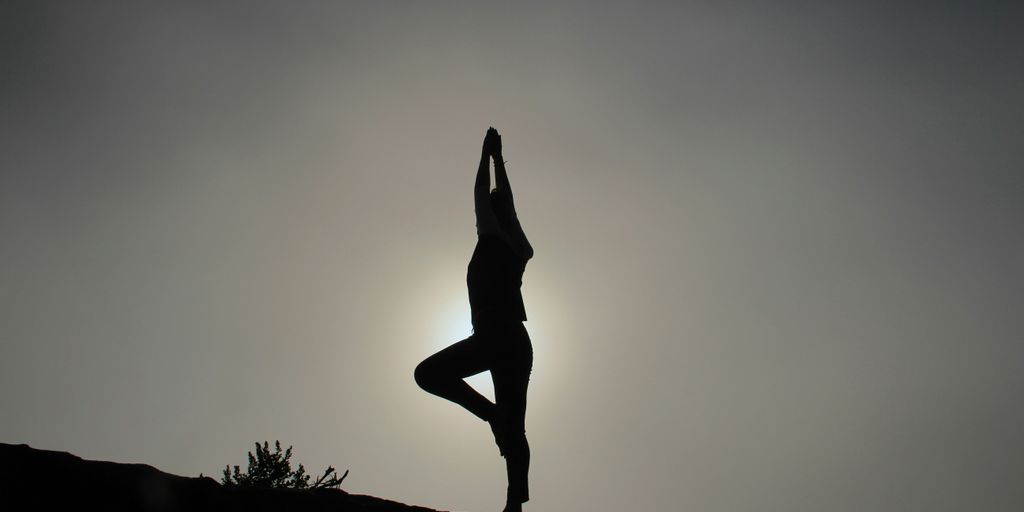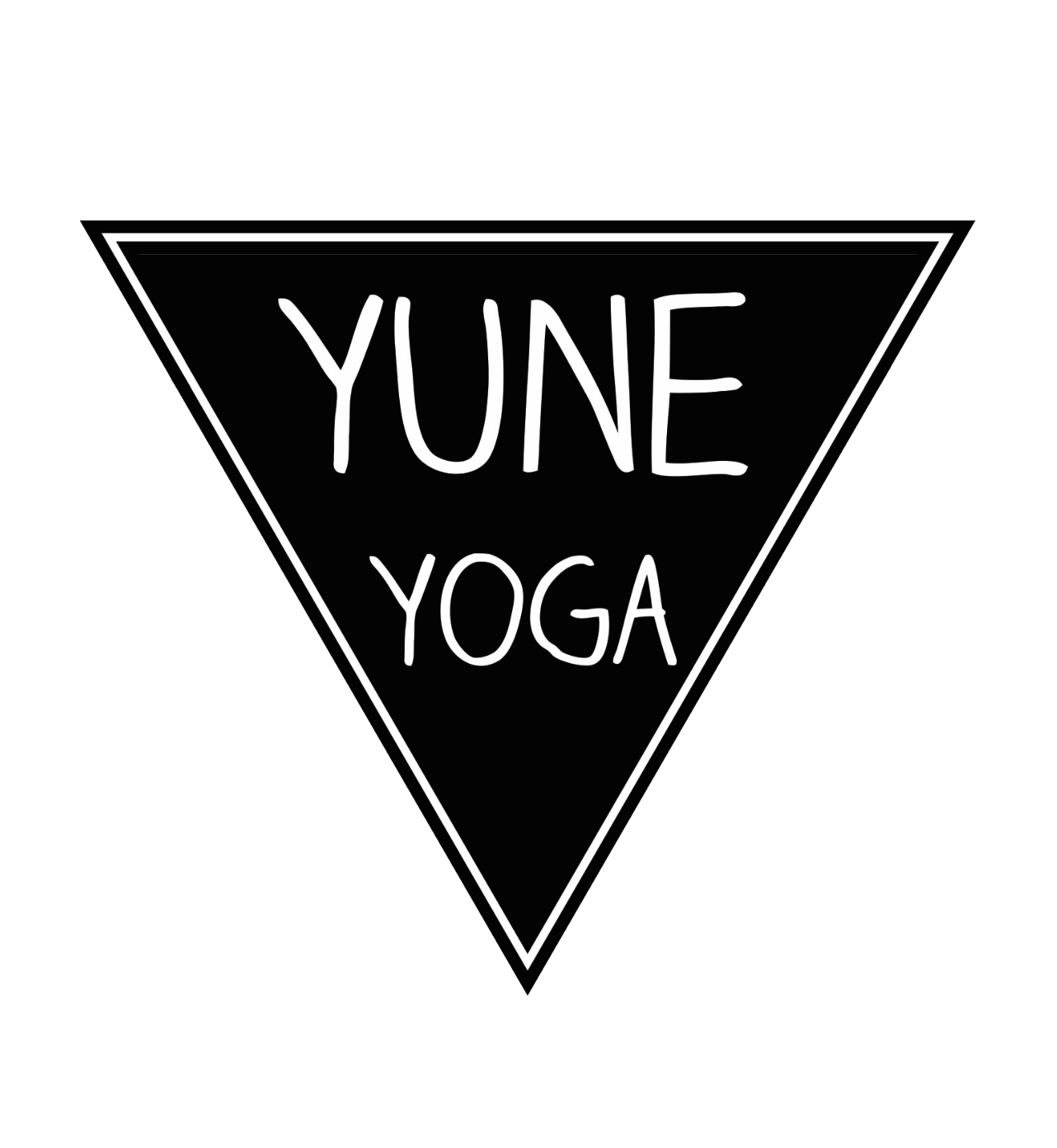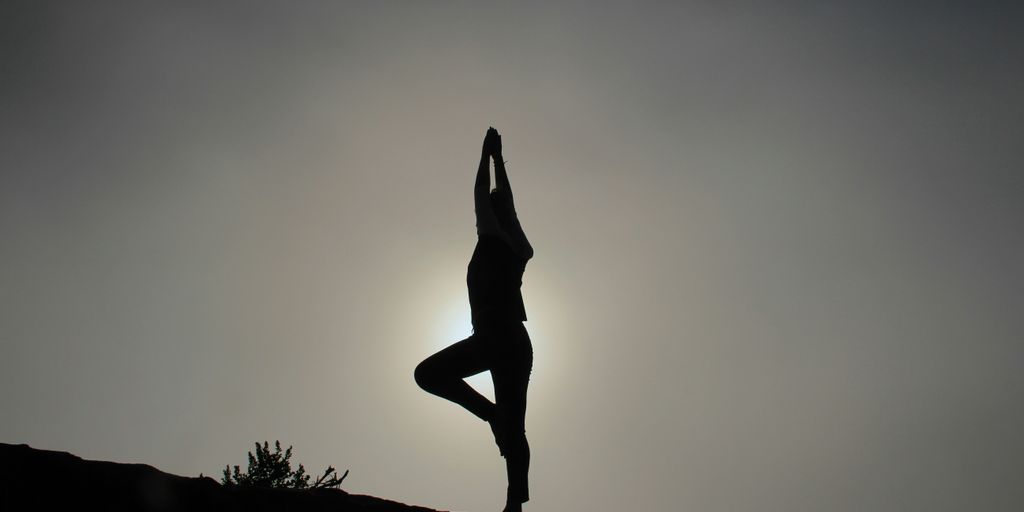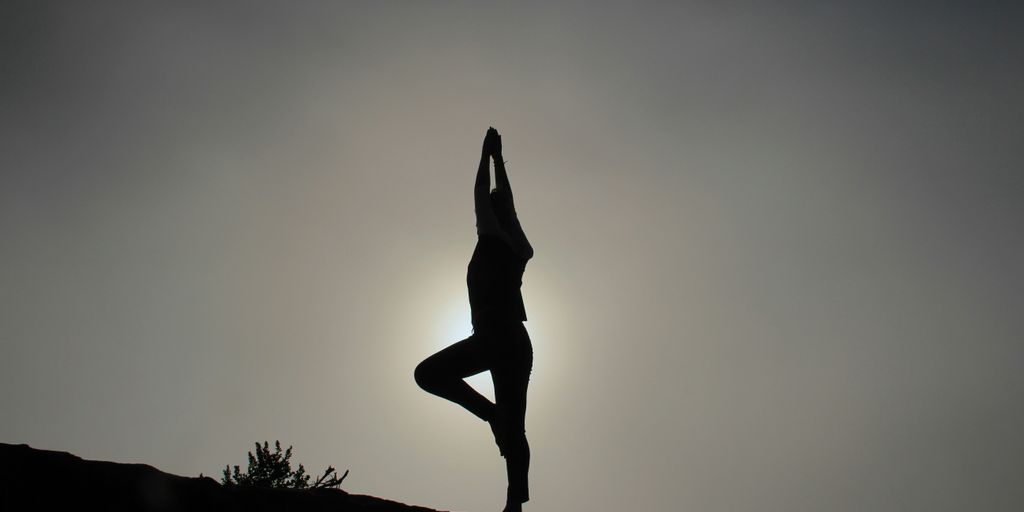
Exploring What Are Yoga Blocks Used For: Essential Tips and Techniques
Yoga blocks are often seen as just a beginner's tool, but they can actually be useful for everyone, no matter your experience level. These props can help with balance, support, and even deepen your stretches. If you've ever wondered what yoga blocks are used for, this article will break down their benefits, how to use them, and why they might just be the perfect addition to your practice.
Key Takeaways
- Yoga blocks provide support for all levels of practitioners.
- They help prevent injuries by promoting better alignment.
- Blocks can enhance flexibility and deepen stretches.
- You can use blocks for strength training in various poses.
- Having two blocks is usually enough for most yoga practices.
Understanding Yoga Block Fundamentals
Types Of Yoga Blocks And Their Uses
Yoga blocks are super useful, but did you know they come in different materials? It's true! You've got foam, cork, and even wood sometimes. Foam blocks are usually the softest and lightest, great for restorative yoga where you want a little give. Cork blocks are firmer and provide more stability, which is awesome for standing poses. Wood blocks are the sturdiest, but not as common. Each material has its own feel, so it's worth trying a few to see what you like best.
Benefits Of Incorporating Blocks In Practice
Yoga blocks aren't just for beginners; they can seriously up your yoga game, no matter your level. They help you reach the floor in poses where you might not be quite flexible enough yet, preventing strain. Plus, they can be used to modify poses to make them more challenging, helping you build strength and improve alignment. Think of them as tools to customize your practice to fit your body's needs on any given day.
- Improved Alignment
- Increased Flexibility
- Enhanced Stability
Using yoga blocks is like having a personal assistant for your body. They support you when you need it, help you find better alignment, and allow you to explore poses more deeply. It's all about making yoga accessible and beneficial for everyone.
Are Yoga Blocks Only For Beginners?
Nope! That's a big misconception. While blocks are fantastic for beginners who are still building flexibility, they're also incredibly useful for experienced yogis. Advanced practitioners can use blocks to deepen stretches, explore new variations of poses, and even work on balance. They can also be used to make certain poses more challenging, engaging different muscle groups. So, whether you're just starting out or have been practicing for years, yoga blocks can be a valuable addition to your practice.
Exploring Yoga Block Uses
Yoga blocks aren't just for beginners; they're super useful for all levels. They can really change how you approach your practice. Understanding how to use them opens up a whole new world of possibilities.
Offers Additional Support
Yoga blocks are great for making poses more accessible. If you're struggling to reach the floor in a forward fold, a block can bring the floor to you. This is especially helpful if you have tight hamstrings or are working on flexibility. It's all about finding that sweet spot where you can maintain proper form without straining. For example, in Triangle Pose, placing a block under your hand allows you to focus on spinal alignment rather than overreaching. This support is a game changer for standing poses.
Prevents Injury
Using blocks can help prevent injuries by reducing strain on your joints. They allow you to modify poses to suit your current level of flexibility and strength. Instead of forcing yourself into a position that your body isn't ready for, you can use a block to ease into it gradually. This is particularly important in poses like Pigeon Pose, where improper alignment can lead to knee pain. Blocks help you maintain alignment and avoid overstretching, keeping you safe and sound. It's like having a personal spotter for your yoga practice.
Enhances Flexibility
Blocks can actually help you increase your flexibility over time. By providing support and stability, they allow you to hold poses for longer periods, which can lead to deeper stretches. They also help you explore variations of poses that might otherwise be inaccessible. For instance, in a seated forward fold, placing a block between your feet can help you maintain a straight spine and focus on lengthening the hamstrings. Over time, you'll find yourself needing the block less and less as your flexibility improves. It's a slow and steady process, but the results are worth it.
Yoga blocks are not just props; they're tools that can help you understand your body better. They provide support when you need it, help you avoid injury, and allow you to gradually increase your flexibility. They're a great investment for anyone looking to deepen their yoga practice.
Incorporating Yoga Blocks Into Your Practice
Yoga blocks aren't just for making poses easier; they're about exploring new depths and possibilities in your practice. It's about finding ways to safely challenge yourself and improve your alignment. Let's look at how to really get the most out of these simple, yet effective, tools.
Basic Techniques For Beginners
For those just starting out, yoga blocks can be a game-changer. They help bridge the gap when you can't quite reach the floor, making poses like Triangle or Forward Fold more accessible. Think of them as training wheels for your flexibility. Here's a simple way to start:
- Forward Fold: Place blocks on either side of your feet. This allows you to maintain a straighter spine, focusing on the stretch in your hamstrings without straining your back.
- Triangle Pose: Position a block on the inside of your front foot. This brings the floor closer, helping you maintain proper alignment in your torso and shoulders.
- Supported Child's Pose: Place a block under your forehead for added comfort and relaxation. This can be especially helpful if you have a tight back or shoulders.
Advanced Modifications For Experienced Yogis
Even if you're not a beginner, blocks can still add a lot to your practice. They can be used to deepen stretches, improve balance, and explore more challenging variations of poses. For example, in Half Moon Pose, using a block under your bottom hand can help you maintain better balance and alignment, allowing you to focus on the rotation of your torso. You can also use blocks to increase the intensity of poses like Bridge Pose by placing one under your sacrum for a deeper backbend. Don't underestimate the power of yoga block exercises to challenge your body in new ways.
Using Blocks For Core Strengthening
Blocks aren't just for stretching; they can also be used to strengthen your core. Try incorporating them into plank variations by placing a block between your thighs to engage your inner thighs and core muscles. You can also use blocks in poses like Boat Pose to challenge your balance and core stability. Here's a quick routine:
- Plank with Block: Hold a block between your inner thighs in plank pose to activate your core.
- Boat Pose with Block: Hold a block between your hands or feet in Boat Pose to challenge your balance.
- Russian Twists: Use a block as a weight while performing Russian Twists to increase the intensity.
Using blocks for core work can really help you feel the burn in those hard-to-reach places. It's a great way to add some extra challenge to your usual routine and see real results over time. Plus, it's a nice change of pace from traditional core exercises.
Restorative Yoga Poses With Blocks
Deep Relaxation Techniques
Restorative yoga is all about slowing down and letting your body relax. Blocks can be super helpful here. They allow you to fully release into poses without straining. Think of it as giving your muscles a break. The goal is to find a position where you can completely let go and breathe deeply.
- Use a block under your sacrum in Savasana for a gentle hip opening.
- Place a block under your forehead in Child's Pose to release neck tension.
- Try a block between your shoulder blades in a reclined position to open your chest.
Restorative yoga isn't about pushing yourself. It's about finding comfort and allowing your body to heal. Listen to what your body needs and adjust the blocks accordingly.
Supportive Poses For Recovery
When you're recovering from an injury or just feeling worn out, restorative poses with blocks can be a lifesaver. They provide the support you need to ease discomfort and promote healing. For example, supported bridge pose is a great way to gently open the chest and release tension in the lower back.
- Supported Bridge Pose: Place a block under your sacrum.
- Supported Child’s Pose: Use a block under your forehead or chest.
- Reclined Butterfly Pose: Support your knees with blocks.
Creating Space In The Body
Blocks can also help create space in your body, allowing for deeper breathing and improved circulation. This is especially useful in poses where you might feel compressed or restricted. By using blocks to elevate or support certain body parts, you can open up areas that are tight or constricted. This can lead to a greater sense of ease and relaxation. Try using blocks in hip-opening exercises to gently stretch and release tension. Blocks can be used to improve your [yoga block stretches].
- Supported Fish Pose: Place a block under your upper back to open your chest.
- Reclined Bound Angle Pose: Support your knees with blocks to release your hips.
- Supported Forward Fold: Use blocks to rest your hands on if you can't reach the floor.
Yoga Block Exercises For Strength
Building Strength In Standing Poses
Yoga blocks aren't just for making poses easier; they can seriously up the ante when it comes to building strength, especially in standing poses. Think of them as a way to add resistance and challenge your muscles in new ways. By strategically placing blocks, you can improve your alignment and engage muscles you might not normally target.
Here's how to get started:
- Triangle Pose: Place a block on the inside of your front foot. This helps maintain proper alignment and allows for a deeper stretch without compromising form. It also builds strength in your legs and core.
- Warrior II: Try placing a block under your front foot. This challenges hamstring flexibility and hip strength.
- Half Moon Pose: Using a block under your lower hand provides stability and allows you to focus on balance and core engagement. It's a great way to build strength in your standing leg and improve overall stability.
Using blocks in standing poses can help you find the perfect position and build strength safely. Remember to listen to your body and adjust the block height as needed.
Challenging Core Workouts
Ready to take your core workout to the next level? Yoga blocks can be amazing tools for targeting those deep core muscles. They add an element of instability, forcing your core to work harder to maintain balance and control.
Here are a couple of ideas to get you started:
- Plank Variations: Place blocks under your hands in a plank to increase the challenge. You can also try squeezing a block between your thighs to engage your inner thighs and pelvic floor. These yoga block exercises are a great way to get new challenges that strengthen our center and improve overall muscle activation.
- Boat Pose: Hold a block between your hands or feet in boat pose to increase core engagement. This forces you to maintain a strong, stable position and prevents you from relying on momentum.
- Russian Twists: Add a block to Russian twists for added resistance. Hold the block with both hands and twist from side to side, focusing on engaging your obliques.
Enhancing Balance And Stability
Balance poses can be tricky, but yoga blocks can provide the support you need to improve your stability and build confidence. They act as an extension of your arms, allowing you to find your center of gravity and maintain proper alignment.
Here's how to use blocks to enhance balance:
- Standing Balance Poses: In poses like tree pose or warrior III, use a block under your hand for added support. This allows you to focus on your balance and alignment without worrying about falling.
- Inversions: For those working on inversions like headstand or forearm stand, blocks can provide a stable base of support. Place your hands on blocks to create a wider base and improve your stability.
- One-Legged Balance: Try balancing on one leg with a block under your foot. This increases the challenge and forces you to engage your core and stabilizer muscles to maintain balance.
Choosing The Right Yoga Block
Material Options And Their Benefits
Okay, so you're ready to get some yoga blocks. Awesome! But with so many choices, how do you pick the right ones? It really comes down to what you need and prefer. Let's break down the most common materials:
- Foam Blocks: These are usually the cheapest and lightest. They're soft, so they're great if you want something gentle for restorative yoga or if you're just starting out. The downside? They're not super sturdy, so they might not be the best for poses where you need a lot of support.
- Cork Blocks: Cork blocks are firmer than foam and offer great stability. They're also eco-friendly, which is a nice bonus. They're a good middle-ground option – not too hard, not too soft. Plus, they tend to absorb sweat better than foam, which is a win if you get sweaty during your practice.
- Wooden Blocks: These are the most solid and durable option. They're heavier, so they're great for advanced poses where you need a lot of support and stability. However, they can be a bit unforgiving if you accidentally knock into them.
Choosing the right material really depends on your personal preferences and what you plan to use the blocks for. If you're unsure, cork is often a good place to start.
Size Considerations For Different Practitioners
Most standard yoga blocks are around 9 x 6 x 4 inches. But that doesn't mean that size is perfect for everyone! Think about your body size and flexibility. If you have shorter arms or aren't very flexible, a larger block might be helpful. If you're more flexible or have longer arms, a smaller block might work better. It's all about finding what feels comfortable and supportive for you. Don't be afraid to try out different sizes to see what works best.
How Many Blocks Do You Need?
For most people, two yoga blocks are ideal. This lets you use one under each hand in poses like Triangle or use them together for different heights in poses like Supported Bridge. While you can definitely get by with just one block, having two gives you more options and flexibility in your practice. If you're setting up a home studio or teaching classes, plan on having two blocks per person. You can also find foam blocks in sets, which can be more economical.
Maximizing Your Yoga Practice With Blocks
Integrating Blocks Into Daily Routines
So, you've got your yoga blocks. Now what? It's not just about using them during your regular yoga session. Think about how you can weave them into your day-to-day life. For example, if you're sitting at a desk all day, try placing a block between your knees to activate inner thighs and improve posture. Or, use one as a footrest to elevate your hips while seated, which can ease lower back tension.
- Use a block as a seat during meditation to elevate the hips.
- Place a block under your sacrum while lying down for gentle back release.
- Incorporate blocks into stretching routines while watching TV.
I started using a block as a reminder to sit up straight at my desk. It's amazing how such a simple thing can make a difference in my posture and overall comfort throughout the day.
Using Blocks For Meditation
Meditation can be tough, especially if you're not comfortable sitting on the floor. Blocks can be a game-changer here. Elevating your hips with a block makes it easier to maintain a straight spine, which is key for comfortable and effective meditation. You can experiment with different heights to find what works best for you.
Versatile Applications Beyond Yoga
Don't limit yourself to just yoga poses! Blocks can be used for all sorts of things. Need a little extra height while stretching? Grab a block. Want to improve your balance during everyday activities? Stand on a block (carefully, of course!). They're also great for physical therapy exercises or even just as a comfy support while reading in bed. The possibilities are pretty much endless.
Here's a table showing some alternative uses:
| Activity | Block Application |
|---|---|
| Stretching | Added height for deeper stretches |
| Physical Therapy | Support for specific exercises |
| Reading in Bed | Comfortable back or neck support |
| Balance Training | Standing on block to improve stability |
- Use blocks to modify seated postures for better alignment.
- Incorporate blocks into your warm-up routine for added support.
- Experiment with different block placements to find what feels best for your body.
Wrapping It Up: The Value of Yoga Blocks
In conclusion, yoga blocks can really change the game for your practice. They’re not just for beginners; anyone can benefit from using them. Whether you need a little extra support or want to push your limits, these props have got your back. They help you reach those tricky poses, keep your body aligned, and even prevent injuries. Plus, they make stretching a whole lot easier. So, if you’re feeling stuck or just want to spice things up, grab a couple of blocks and see how they can help you grow in your yoga journey.
Frequently Asked Questions
What are yoga blocks used for?
Yoga blocks help you reach the ground in poses, provide support, and make stretches easier.
Can yoga blocks help beginners?
Yes, they are great for beginners because they make poses more accessible and comfortable.
Are yoga blocks only for beginners?
No, even experienced yogis use blocks to improve their practice and try new poses.
How many yoga blocks do I need?
Usually, two yoga blocks are enough for most people to use in different poses.
What materials are yoga blocks made from?
Yoga blocks can be made from foam, cork, or wood, each offering different benefits.
Can I use yoga blocks for strength training?
Absolutely! Yoga blocks can make exercises harder and help strengthen your core.


